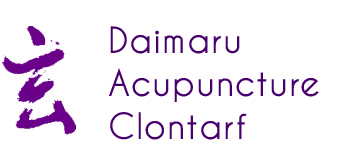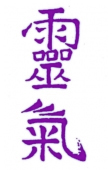

Ki Massage is a revitalising Swedish-style massage,
practised with grapeseed and aromatic oils. It stimulates
the circulation of the blood and the lymph. It tones up and
refreshes tired and aching muscles and it eases the tensions
and stress of modern day living.
Treatments:
Massage, in conjunction with Acupuncture, can improve stiffness, pain and mobility of joints and muscles, e.g. back massage or neck and shoulder massage, joints, etc.
REIKISHI is a treatment which
combines elements of Ki-Massage, Shiatsu and Reiki. It is a
combination which over many years I have found works
extremely well in promoting relaxation, giving relief from
the physical build-up of the stress caused by our modern way
of living; balancing energy; treatment of specific problems
and— space for an awareness of our essential self.
It includes some relaxing techniques of Ki-Massage with the
use of oil, using acupressure points and Shiatsu techniques
to rebalance the physical body and balancing the chakra
system with Reiki.
MASSAGE IS AVAILABLE AS AN INDIVIDUAL TREATMENT.
Reiki is a gentle palm healing, where the Universal Qi (Energy) is directed through the hands of the practitioner to rebalance and stimulate the individual's own healing power.

Since most patients come with 'out of sync' energy patterns, I am primarily, as an acupuncturist, concerned with rebalancing their energetic patterns but to enhance that I use Reiki. I believe that Reiki comes from the vast field of energy which exists in the universe, which—in quantum physics— is called the Zero Point Field. I believe—as we have been informed by scientists, neurologists and biologists—that we use only a fraction of our human potential and that we can tap into this vast energetic system from everything that surrounds us—from the sea, the trees, the earth, the heaven—through Reiki. When I use Reiki during an acupuncture treatment, therefore, I see it as adding to each patient's existing energic system, thus providing a much wider basis, both for balancing the existing supply of energy available and for increased healing capacity on the part of the patient him/her self.
In practising Reiki with acupuncture sometimes, I use it while the acupuncture needles are still in place, sometimes placing my hands over or around the needles, sometimes on the chakra areas. At other times, I will do Reiki after I have completed my Acupuncture Treatment. This choice, of course, depends on the acupuncture treatment itself and often on the patient and the circumstances surrounding the patient. I always ask for their permission and sometimes they prefer not to receive it but most people are quite happy to receive it. I also always emphasise the need of the patient to consciously draw in the Reiki to where they feel their bodies need it. I believe that Reiki, used in conjunction with Acupuncture, greatly enhances the healing process and that the total effect is greater and more holistic.
REIKI IS ALSO AVAILABLE AS AN INDIVIDUAL TREATMENT.
Shiatsu is an ancient, Japanese form of acupressure. Its principles are based on the Oriental philosophy of good health as a balanced flow of energy in the body. Any imbalance is dis-ease, be it physical, emotional, mental or spiritual.
By balancing the flow of energy in the 'acupuncture' meridians, shiatsu can relieve many conditions, help prevent the build-up of stress and restore vitality and well-being. Literally translated as 'finger pressure', shiatsu involves comfortable pressure from the fingers, thumbs and palms which is applied to the energy channels and points on the body. Given through loose, comfortable clothing, shiatsu may also include gentle stretches and rotations of the limbs and joints.
A shiatsu treatment takes approximately 45 minutes to 1
hour. Extra time will be needed on the first visit so
that a detailed case history can be taken. The treatment
usually takes place on a padded mat or futon (Japanese
mattress) on the floor so that body weight rather than
muscle power may be applied. The person remains fully
clothed throughout the session. Seated shiatsu massage
can also be given if you are unable to lie down.
Benefits of Shiatsu
Acute conditions can respond in one treatment, however, more chronic problems may require more as the body relaxes and re-balances.
You do not need to wait until you already have a problem
to have a shiatsu. A regular shiatsu treatment is, in
fact, a good way to prevent health problems arising.
Many people come for shiatsu because they enjoy it and
find that they feel more energised and refreshed after
it.
After the first 3 months of pregnancy, shiatsu is safe
and beneficial for pregnant women. Shiatsu is given
while lying on the side, a position both comfortable and
suitable for pregnancy. It can be of great relief to
back ache and other discomforts during pregnancy and is
very supportive.
Shiatsu can also be complementary to other medical
treatments and does not interfere with regular
medication.
"I knew there was a treatment, somewhere, that suited me".